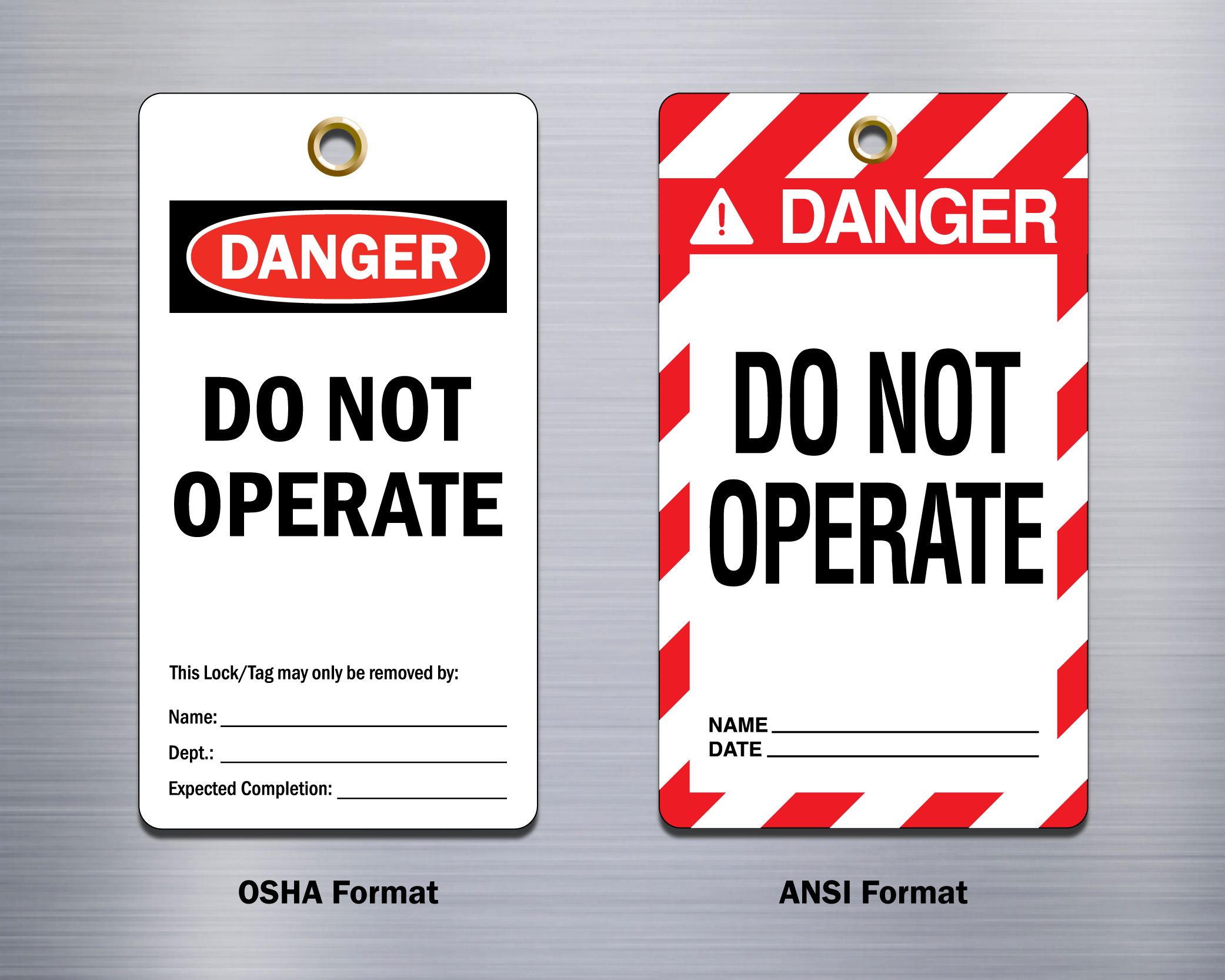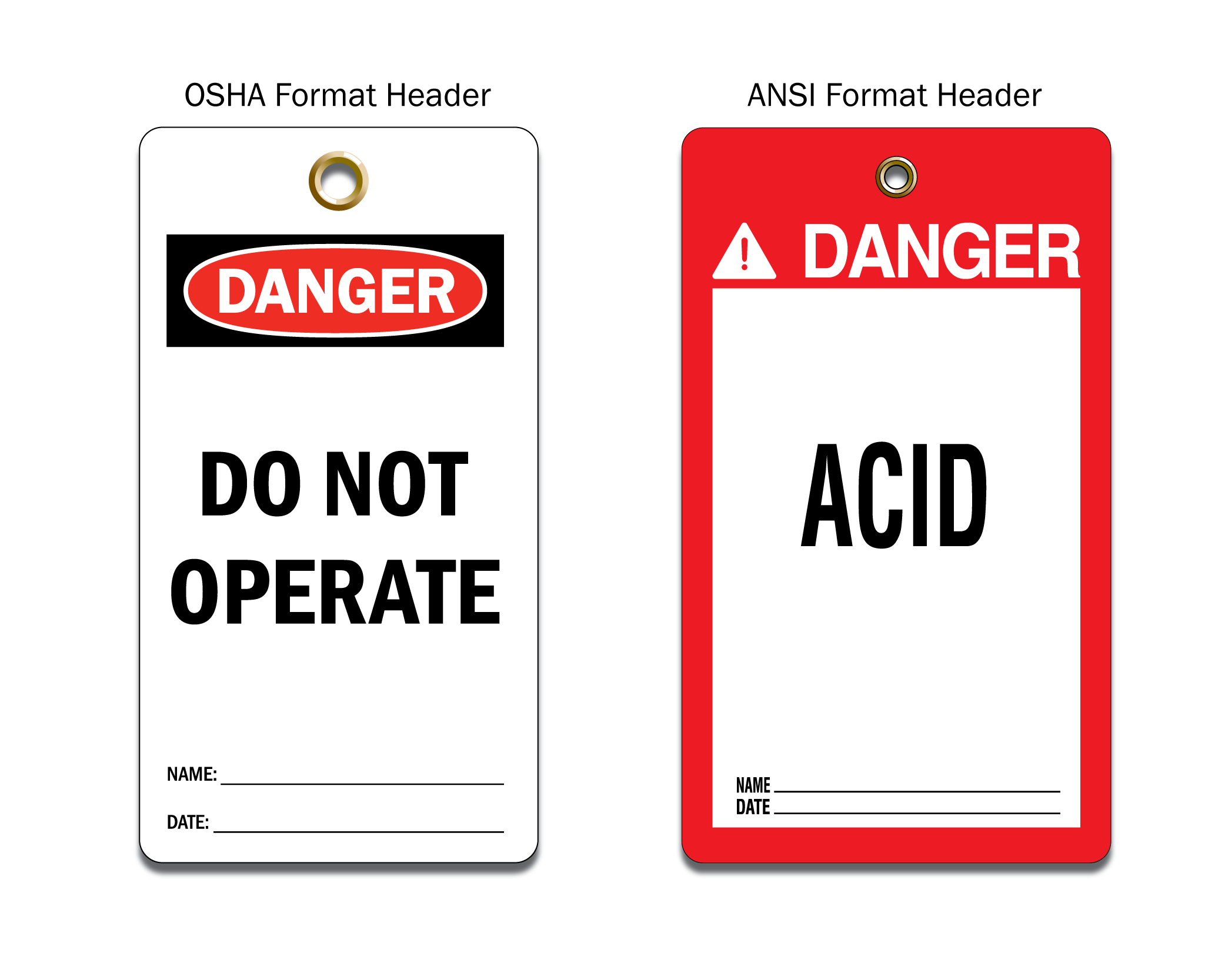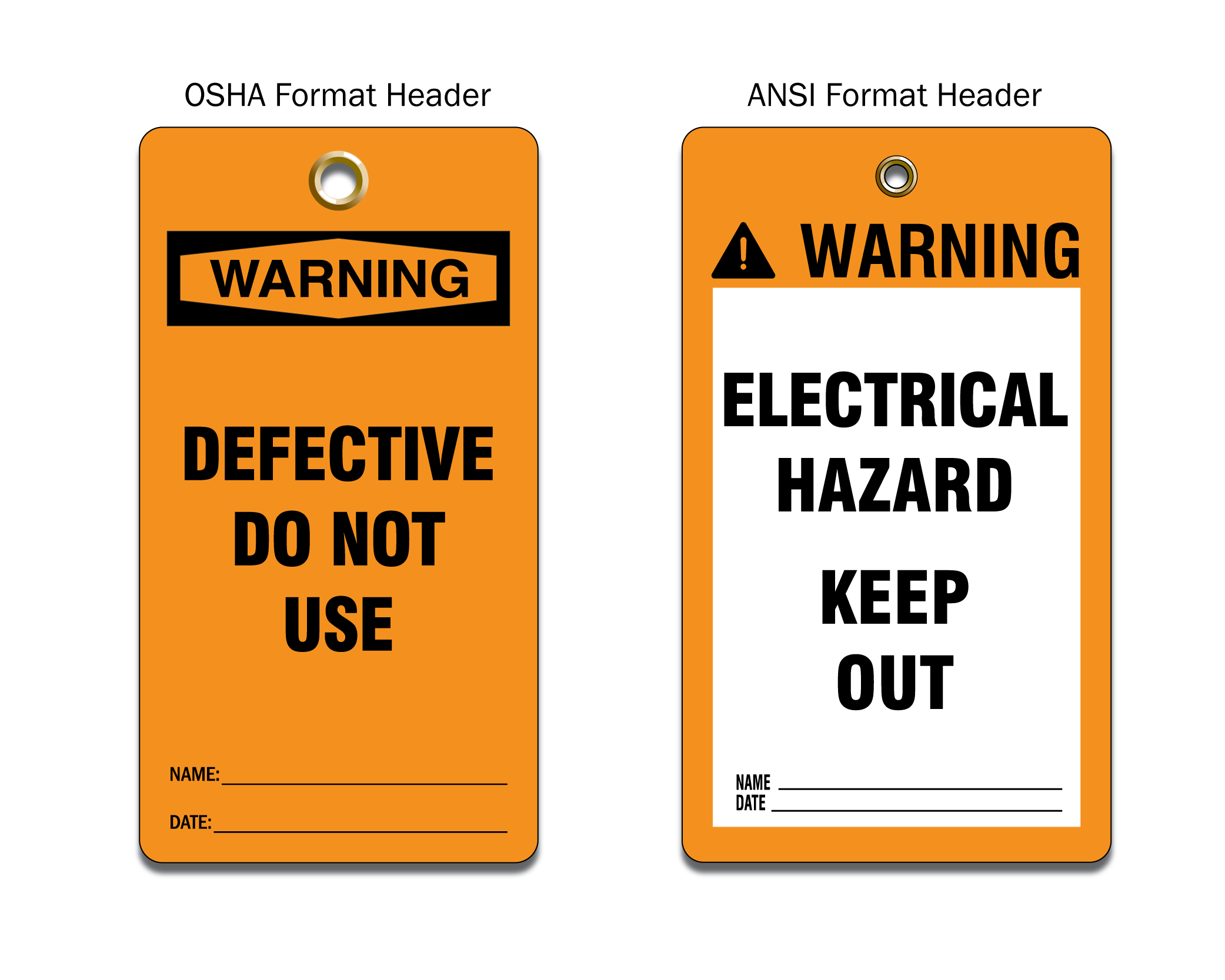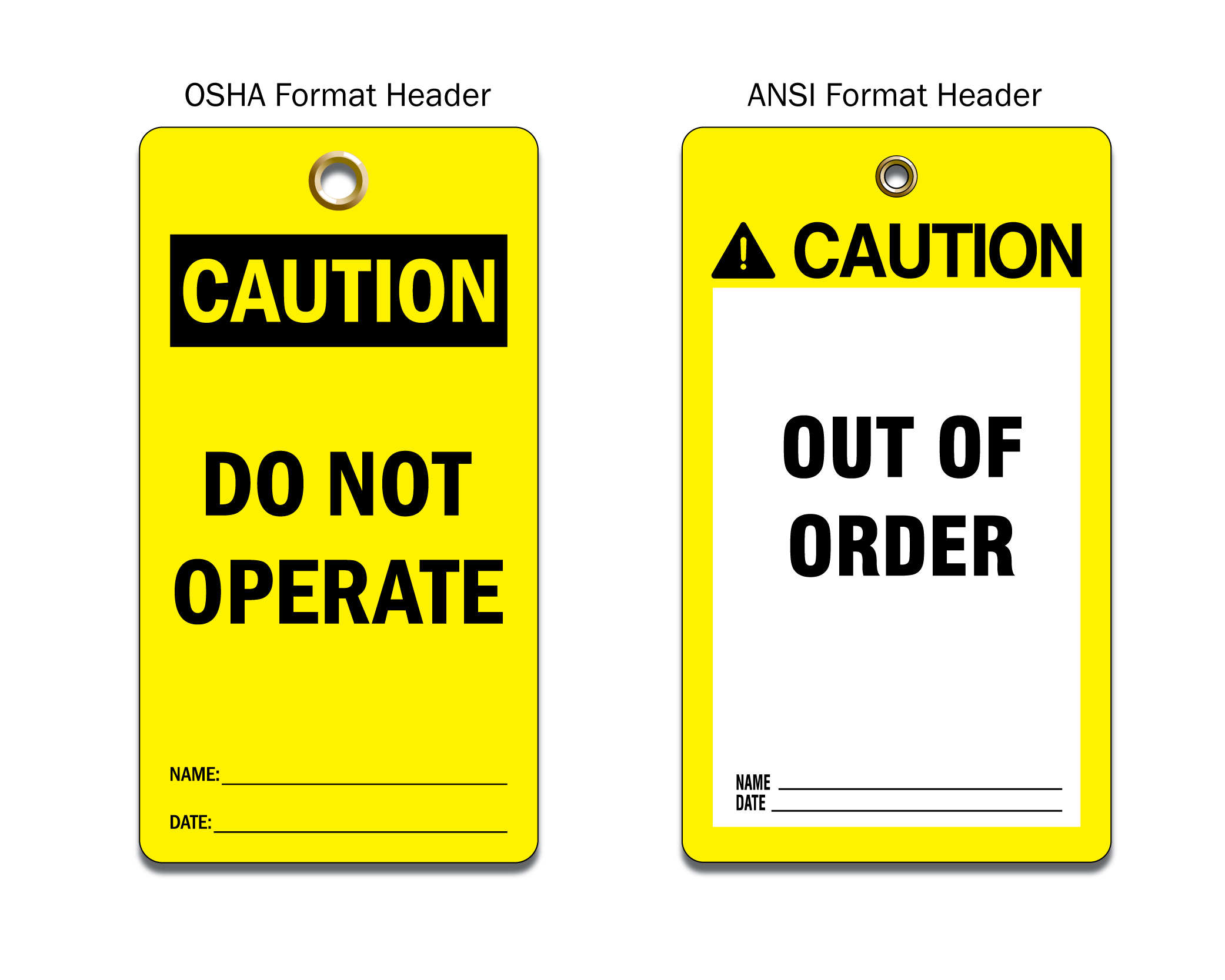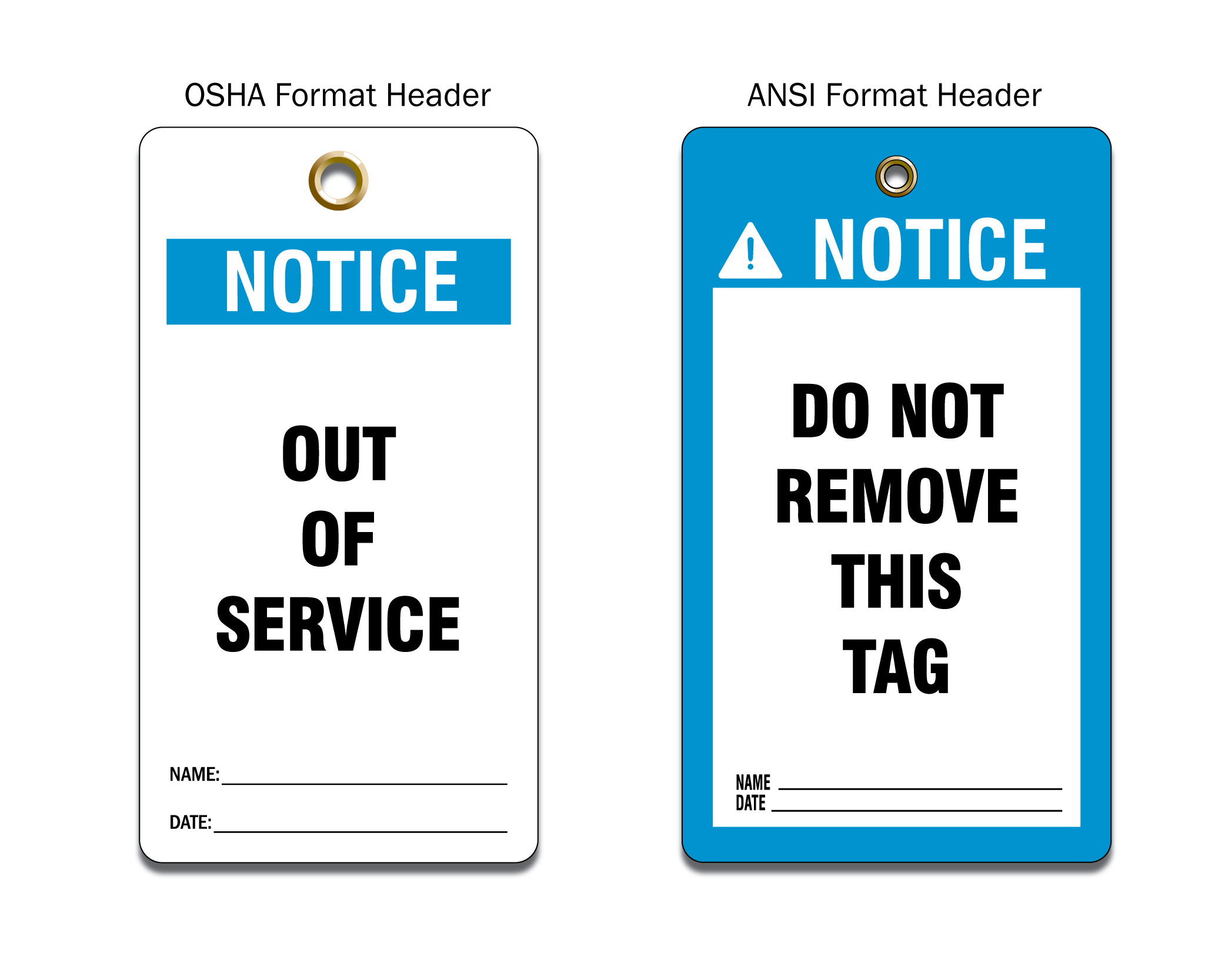When should you use an OSHA tag header or an ANSI tag header?
First, it’s important to understand the difference between the two organizations.
OSHA, the Occupational Safety & Health Administration which is part of the U.S Department of Labor, enforces standards and regulations for safe, healthy workplace conditions and practices. ANSI, the American National Standards Institute, is a private, non-profit organization which develops voluntary standards for processes, products, services, personnel and systems.
In 2013, OSHA published a revision to its standards for signage (29 CFR 1910.97, 1910.145 and 1910.261) for general industry and construction (29 CFR 1926.200). The statute still includes references to the older ANSI Z35-1968 standards which allows employers to maintain their existing safety signage and not endure the cost of replacement or penalty. The 2013 update incorporates the newer, more detailed ANSI standards:
Read MoreANSI Z53.1-1967 (Safety Color Code for Marking Physical Hazards), Z35.1-1968 (Specifications for Accident Prevention Signs), and Z35.2-1968 (Specifications for Accident Prevention Tags), by adding references to the latest ANSI standards, including ANSI Z535.1-2006 (R2011) (Safety Colors), Z535.2-2011 (Environmental and Facility Safety Signs), and Z535.5-2011 (Safety Tags and Barricade Tapes (for Temporary Hazards)).
These newer standards will give employers the ability to improve upon their existing conditions when adding new signage in the workplace environment.
While OSHA does not mandate the use of ANSI standards, the new ANSI standards offer more detailed information about hazards including the severity, the consequences and how to avoid the hazard. Bi-lingual texts and graphic symbols further help to convey safety information to non-English speaking people. These newer ANSI standards are providing better protection in liability lawsuits because of the clarity and more detailed nature of the content.
1926.200(h)
Accident prevention tags.
1926.200(h)(1)
Accident prevention tags shall be used as a temporary means of warning employees of an existing hazard, such as defective tools, equipment, etc. They shall not be used in place of, or as a substitute for, accident prevention signs.
1926.200(h)(2)
For accident prevention tags, employers shall follow specifications that are similar to those in Figures 1 to 4 of ANSI Z35.2-1968 or Figures 1 to 8 of ANSI Z535.5-2011, incorporated by reference in Sec. 1926.6.
Danger Header:
ANSI Z535.5 Definition: “Indicates a hazardous situation that, if not avoided, will result in death or serious injury. The signal word “DANGER” is to be limited to the most extreme situations. DANGER [signs] should not be used for property damage hazards unless personal injury risk appropriate to these levels is also involved.”
OSHA 1910.145 Definition: “Shall be used in major hazard situations where an immediate hazard presents a threat of death or serious injury to employees. Danger tags shall be used only in these situations.”
Warning Header:
ANSI Z535.5 Definition: “Indicates a hazardous situation that, if not avoided, could result in death or serious injury. WARNING [signs] should not be used for property damage hazards unless personal injury risk appropriate to this level is also involved.”
OSHA 1910.145 Definition: “May be used to represent a hazard level between “Caution” and “Danger,” instead of the required “Caution” tag, provided that they have a signal word of “Warning,” an appropriate major message, and otherwise meet the general tag criteria of paragraph (f)(4) of this section.”
Caution Header:
ANSI Z535.5 Definition: “Indicates a hazardous situation that, if not avoided, could result in minor or moderate injury.”
OSHA 1910.145 Definition: “Shall be used in minor hazard situations where a non-immediate or potential hazard or unsafe practice presents a lesser threat of employee injury.”
Notice Header:
ANSI Z535.5 Definition: ” Indicates information considered important but not hazard related. The safety alert symbol [the triangle symbol with the exclamation point] shall not be used with this signal word. For environmental/facility signs, NOTICE is typically the choice of signal word for messages relating to property damage, security, sanitation, and housekeeping rules.”
OSHA 1910.145 Definition: Non-existant

